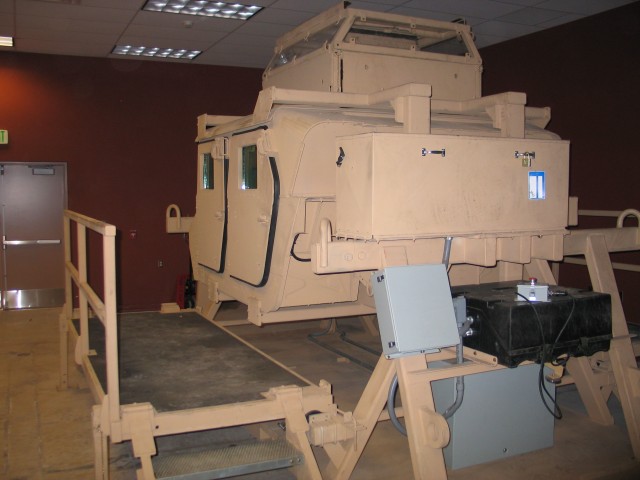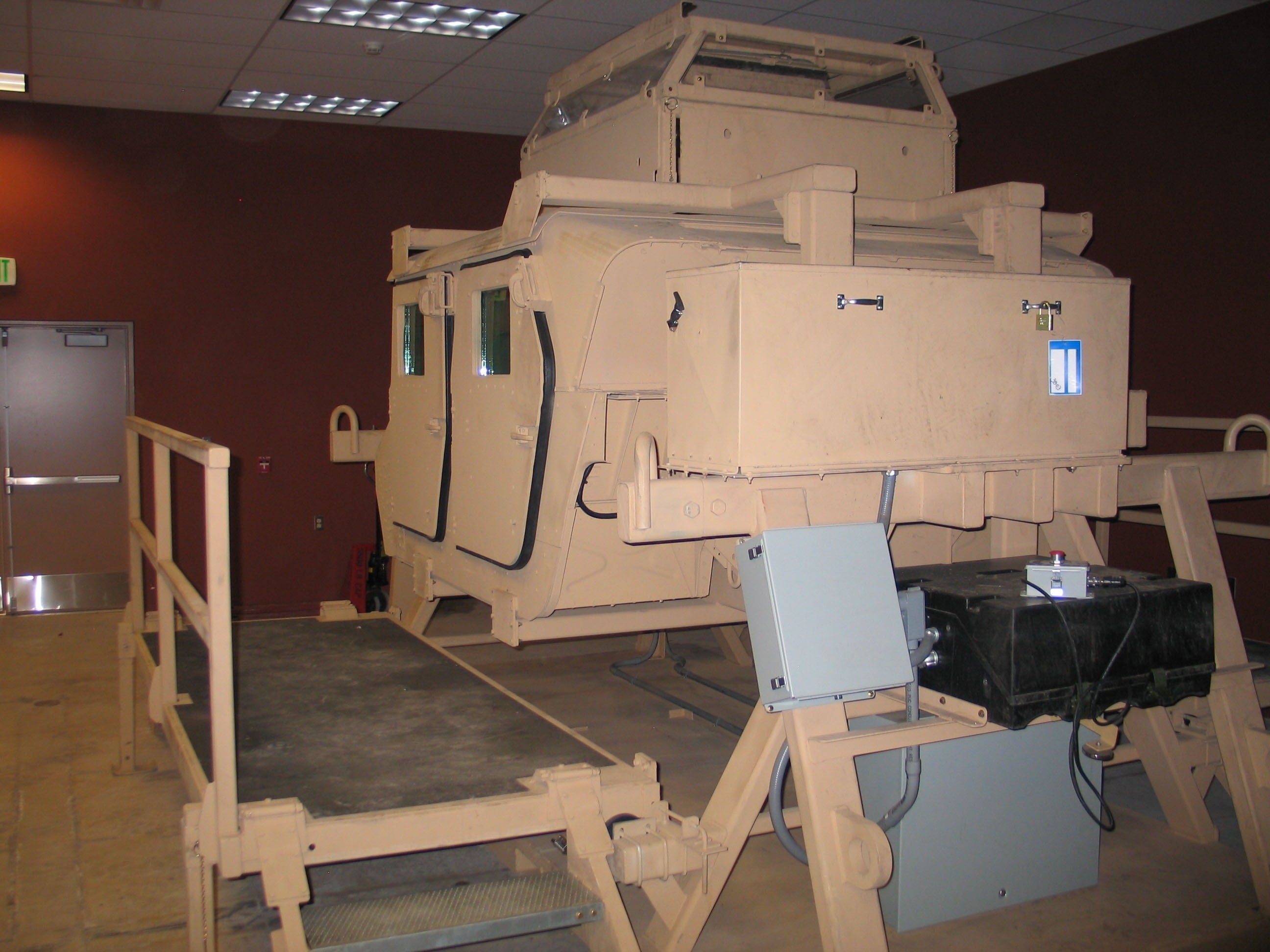
WASHINGTON (Army News Service, April 11, 2007) - The Program Executive Office for Simulation, Training and Instrumentation fielded the Army's first standardized Humvee Egress Assistance Trainer to Fort Carson, Colo., April 3.
An Operational Needs Statement from the U.S. Army Forces Command prompted PEO STRI to produce and field the training device to Soldiers at home and in theatre.
"HEAT will provide the Soldiers of Fort Carson, and all follow-on fielding sites, with the ability to conduct realistic and relevant training related to the M1114 up-armored Humvee," said Lt. Col. Scott Pulford, PEO STRI product manager for ground combat tactical trainers. "It gives Soldiers confidence in their seat restraint systems and equipment, and demonstrates the importance of vehicle load plans and securing all on-board equipment to prevent injury during rollovers."
The device simulates a rolled-over Humvee, in which the trainer is capable of rotating and stopping in various positions, making it the only Army training device that allows Soldiers to practice a variety of egress techniques at different angles.
"This training will increase the survivability of our Soldiers," said Maj. Vernon Myers, assistant project manager for the HEAT.
"During training, units will be able to provide Soldiers an understanding of how it feels when a vehicle is on the verge of rolling over," Maj. Myers said. "This will allow them to react quicker in a rollover situation."
During a simulation, Soldiers are instructed to yell: "Rollover, Rollover, Rollover!" as the Humvee rotates 360 degrees in either direction.
If a gunner is in the hatch, Soldiers are responsible for pulling him or her back into the Humvee once the rollover has occurred. Since the gunner is in the most vulnerable position in the vehicle, the gunner's cage allows him or her to be trained to respond effectively.
Once the vehicle comes to a complete stop, Soldiers assess the situation and report to the leader. Soldiers then place one arm above their head against the roof of the vehicle to brace the weight of their body, while at the same time reaching across his or her body with the free arm to unbuckle the seatbelt.
"Really, the first task is to gain orientation (when you are upside down) and identify any Soldiers having issues removing their seatbelts," Maj. Myers asserted.
The Soldiers then identify the easiest and quickest means of escape.
"External door locks allows the instructor to simulate obstructed doors, which provides training flexibility and causes trainees to think about actions to take if they face a blocked door in a real rollover," he said.
As soon as an exit is identified, each Soldier exits the Humvee, establishes security and administers first aid.
FORSCOM developed the initial egress trainer that led to the Coalition Forces Land Component Command in Kuwait building 31 HEATs for training in theater.
"To date, thousands of Soldiers have already trained on the first generation HEAT," Maj. Myers said.
PEO STRI worked in collaboration with the U.S. Army Tank Automotive Research Development and Engineering Center and Red River Army Depot to produce the HEAT.
"The team has taken lessons from systems designed and built in theater, as well as other locations to create a 'best of breed' design that satisfies all of the user's requirements," Lt. Col. Pulford said.
Currently, 53 systems are scheduled for production and fielding to stateside and worldwide locations.
(Kristen Dooley writes for the Program Executive Office for Simulation, Training and Instrumentation.)

Social Sharing